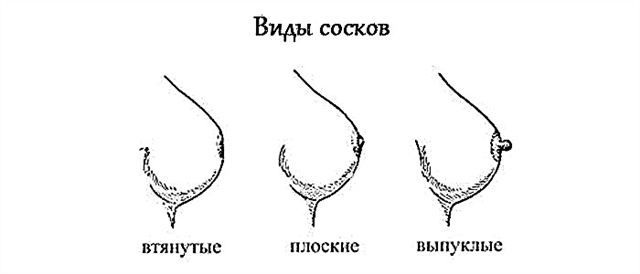
Almost everyone loves summer, but this wonderful time of the year has its own disadvantages. Heat comes to mind first, but various flying insects that bite, causing irritated skin to itch unbearably can also cause significant discomfort. For adults, the solution is obvious - they can use special sprays and fumigators.
However, in the case of a small child, the use of such agents is undesirable: for the reason that the baby is unlikely to observe safety precautions when using such toxic substances. A good solution in this situation is a mosquito net that attaches directly to the stroller. Thanks to her, the child will be safe not only at home, but also on a walk.


Features:
Some parents think that a mosquito net for a child is chic, not a necessity, because they themselves grew up without such impressive amenities. This logic is not very correct, because for a child, even the bite of an ordinary mosquito is a much more serious incident than for an adult:
- A child is several times smaller than an adult in size, so a mosquito for him is like a huge beetle for us.
- Children, in principle, are very prone to allergies, because the same seemingly harmless bite can cause severe skin redness, itching and an allergic rash.
- The danger of allergies comes not only from insects, but also from dust, dirt or pollen from some flowering plants. A mosquito net can also be an excellent barrier for such an irritant.

A certain motivation for purchasing a mosquito net is also a purely aesthetic moment. The right accessory, which matches well with the stroller hood, complements the look and makes the vehicle more stylish.
Another incentive should not be ruled out: many mothers believe that a casual passer-by with an envious glance can jinx a child, which will result in various troubles for him, while through a mosquito net he is not really visible during a cursory examination.
Models and colors
A mosquito net is a simple enough product to be divided by brand or model, but even such products are different. According to the classification, advice is usually given on how to choose the right mesh:
- The nets come in different sizes, and the fastening methods also differ, and even before making a purchase, parents should be sure that this particular anti-mosquito will fit their stroller. Of course, the fabric should be with a small margin in size. Even if it stretches, there will be gaps between the mounts large enough to allow dirt, allergens and insects to enter. At the same time, it is also not worth purchasing too large a mesh: it looks ugly, and it will get in the way, and it will probably break faster.

- The mosquito net comes in different shadesso that the product can match the general color of the stroller, but it is not advised to buy black even if the hood is just like that. The fact is that black, as you know, very strongly attracts the sun's rays. Materials of this color heat up much faster in the sun. At the same time, the mesh is far from a hood, it does not protect the baby from attracted rays, letting them in, so there is a risk of depriving the child of shade on a hot day.
- The holes that cover the entire mesh can vary in size (depending on the manufacturer). The best option is averaging. The logic here is obvious: if the holes are too large, they are unlikely to be able to delay everything that the anti-mosquito should prevent. A mesh with small holes would perfectly cope with such a task, but in its density it can resemble ordinary fabric. Then a real greenhouse is formed under the hood (without the slightest breath of fresh air), and you can forget about the baby's comfort.


How to attach correctly to the stroller?
To put on a mosquito net on a stroller, you need to use rubber bands or Velcro specially provided for this purpose, which are already sewn onto the product. At the same time, you need to put it on in the correct order - if you want the mesh not to slip, opening the baby, not to break and allow you to quickly open it for access to the child:
- The mosquito net is attached to the top of the hood, to the visor.
- The second step is to pull it down and secure it at the base of the hood.
- Near the baby's legs, the net is attached last (after it has been fixed in the hood area).

If you've already bought a mosquito net, don't put it off until just before your walk. It is clear that at home it will not be permanently fixed on the wheelchair, because before leaving, it still needs to be removed in order to seat the passenger, but immediately after purchase, the mosquito net must be tried on on the stroller. This will allow you to make sure that the chosen model is suitable for this stroller, and at the same time to practice quickly putting it on and off (in the worst case, to see that the choice was made incorrectly).
An early understanding of the wrong choice at least allows you to change the product in the store before it shows itself from the worst side during a walk.
How to sew with your own hands?
Many mothers, who are used to working with fabric, think that they could sew a mosquito net for their child themselves. The birth of a baby in itself means financial costs, and saving at least on such inexpensive things will help keep the budget safe and sound.

This does not always even require any skills related to cutting and sewing. If a special plastic raincoat is included with the stroller, it can be used as a perfect reference. It is necessary to buy a sufficient amount of fabric that is suitable for the texture (for example, tulle or tulle) and cut the material into a raincoat using the latter instead of a pattern.


The process is carried out as follows:
- Take measurements from the stroller as shown in the photo.
- Cut out a rectangle from the fabric according to the following dimensions: width = segment: CD + 10 cm, length = segment: AB + 10 cm, make the edges of the figure round.


- Fix the mesh along the edges with tailor's pins (1.5 cm inward) and sew on a typewriter.
Fasteners must be on those parts that are adjacent to the visor on both sides.


- Cut out the loops from the elastic. The length of each piece of elastic is 7 cm.
- Attach the buttonhole to the net (as shown in the photo) and machine stitch. You need to leave room for the entry of the elastic.


- Use a pin to insert the elastic. The ends of the elastic should be sewn up by hand or with a typewriter.
- As a result, you should get the next mesh for the stroller.
The creation of additional fastening is encouraged - in the form of separately sewn elastic bands that can be passed under the walking block or cradle and tied from below. This solution ensures a secure fit between the visor and the footrest of the mosquito. In places where the mosquito net will come into contact with the fabric parts of the stroller, you can additionally sew on Velcro. So no irritants will get inside.
You can learn how a universal stroller mesh looks like and where it can still be applied from the following video.



